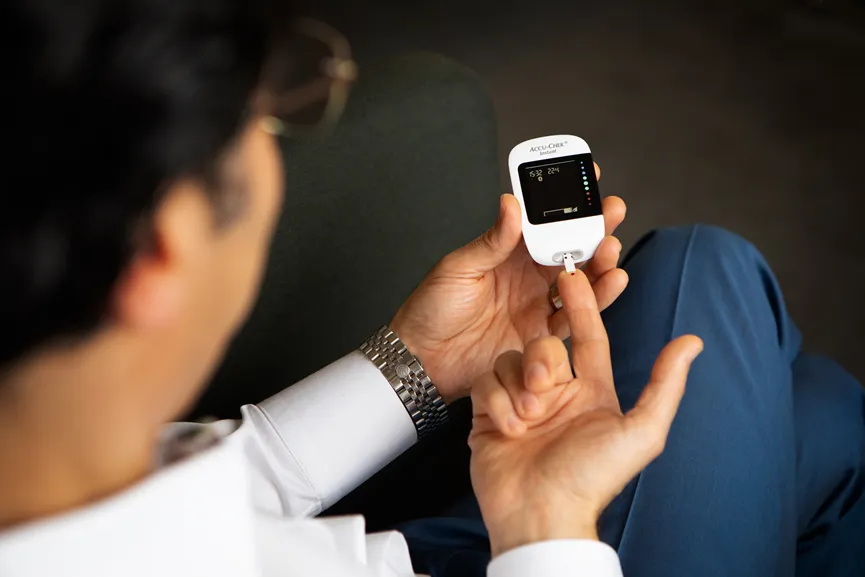Type 1 diabetes
Insulin is a hormone that is needed for the cells to absorb sugar from the blood. In type 1 diabetes, the body has stopped producing insulin, which contributes to too much sugar in the blood and the blood sugar becomes too high. Type 1 diabetes is a disease that you have throughout your life and that usually develops when you are a child or in your teens, but sometimes also in adulthood. Type 1 diabetes can cause complications that happen quickly, but also complications and sequelae that occur later in life. Many complications can be detected early and treated.
P-glucose is a blood test that is usually taken through a finger prick and which shows the sugar content in the blood at the time of sampling. With a blood test that measures HbA1c, the doctor can also see how the blood sugar has been on average over the past two to three months, which is sometimes called a long-term blood sugar test.
Symptoms
Untreated type 1 diabetes can cause symptoms such as increased thirst, frequent urges to urinate, fatigue and weakness, nausea, stomach pain, visual disturbances, unintentional weight loss or the smell of acetone from the mouth.
Reason
Type 1 diabetes is an autoimmune disease. This means that the immune system has started to attack its own body. The cause is not completely known, but type 1 diabetes is likely to be caused by infection with certain viruses. The disease is also considered to be partly hereditary.
Treatment
Treatment for type 1 diabetes consists of controlling blood sugar levels and taking insulin. The blood sugar value is the measurement that indicates how much sugar you have in your blood. Insulin helps the cells take up the sugar in the blood.
Source: 1177
Remote patient monitoring in type 1 diabetes
Remote patient monitoring can be used for type 1 diabetes. Through remote patient monitoring, you can measure your blood sugar wherever and whenever it suits you.
You get access to a Bluetooth-connected blood glucose meter that you pair with a mobile app. When you measure your blood sugar, the values are automatically entered into the app. There you can follow the values over time through graphs and tables. If your blood sugar is abnormal, i.e. too high or low in relation to set limit values, your caregiver will receive a notification about this and can contact you for possible measures.
By detecting too high or too low blood sugar values in time and correcting them, the risk of both quick and slow complications is reduced.

